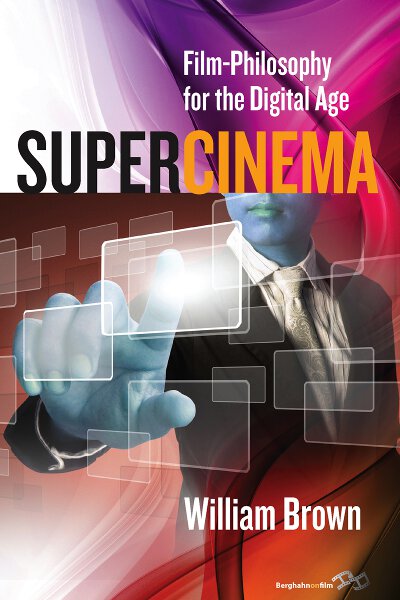It all started in 1999 with a camera that appeared to have superpowers, and that observation led to the publication of Supercinema: Film-Philosophy for the Digital Age in May 2013. Below, author William Brown examines the digital techniques of modern cinema in his recently published work, in which he tells the story of popular cinema hiding behind analogue cinema techniques, “analogous to that of Superman hiding his powers behind the persona of Clark Kent.”
___________________________________

My monograph, Supercinema, has two principal moments of origin.
The first moment came when watching Fight Club in 1999. I was intrigued by the way in which the camera passed – seemingly without a cut – through solid objects and empty space as if they were both permeable.
I then spent several years trying to work out whether there had been other films featuring this kind of image. Although it features moments where the (virtual) camera passes through solid objects, traditional (cel) animation is not on the whole photorealistic, while Fight Club’s images were photorealistic. And although elaborate camera movements, including through windows and across set walls, had featured in the history of analogue cinema, none had done so with the ease and on the scale of Fight Club. Realising that Fight Club was potentially doing something unique, therefore, I decided to do first a Master’s dissertation and then a doctoral thesis on the aesthetic implications of digitally enabled shots of this kind.
In this way, Supercinema really springs from my old doctoral thesis, at the time called Towards a New Realism: The Depiction of Space and Time in Digital Cinema, which I handed in to the University of Oxford in 2006, before successfully defending my thesis at my viva voce in 2007.
The second moment came for me, when, in between doctoral submission and viva, I won a job as an editorial assistant in the Psychoanalysis Unit of the Psychology Department at University College, London. This post involved reading a lot of neuroscientific papers for the purpose of understanding the context behind much of the work of the unit.
Reading paper after paper I was amazed at how what I was reading was relevant to film studies. Indeed, I was intrigued by the way in which neuroscientists are often using films precisely as the objects of their study – and making claims about our understanding of the real world on the basis of audience responses to those films.
Naturally, this revelation led me to want further to develop a neuro-cognitive approach to film. As I took up my first teaching post at the University of St. Andrews, I continued to study neuroscience.
What I found particularly interesting was that while much cognitive study of film stands in great contrast to the film theoretical approaches that have tended to hold sway in film studies since the 1970s, neuroscience seemed in part to suggest that the suggestions and insights offered by film theory were not too easily dismissed, in particular the film philosophy elaborated by Gilles Deleuze, which had proven the theoretical bedrock of my doctoral thesis.
And so I spent the next few years, which included a move from St. Andrews to the University of Roehampton, London, where I currently teach, developing Supercinema. Its first three chapters are elaborations upon work that had formed the bulk of the doctoral thesis, while the final chapter in particular is an effort to bring together the neuro-cognitive paradigm, film theory, and the aesthetics of digital cinema.
I had heard strong things from other authors who had published through Berghahn: this was a good publisher to work with. And if these initial recommendations were not enough, I then discovered that Berghahn was the publisher behind Projections: The Journal for Movies and Mind, one of the most exciting new journals in film studies, and which explicitly embraced (and continues to embrace) the cognitive and the neuroscientific approaches to film. Where else would I have published, then?
It has been a long journey, but I feel that Supercinema is nonetheless timely and that, with Berghahn, it has found its most appropriate home.
___________________________
William Brown is Senior Lecturer in Film Studies at the University of Roehampton, London. He has written articles for journals and edited collections with a particular emphasis on the use of digital technology in contemporary cinema across a range of national and transnational contexts. He is also a filmmaker, having made four feature films since 2009.
